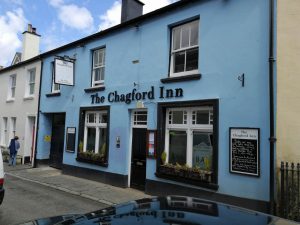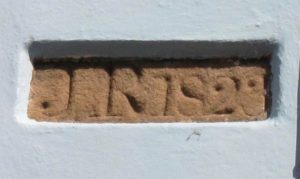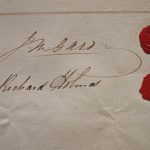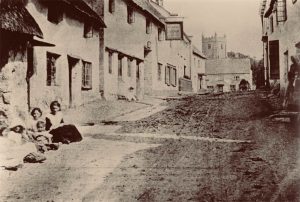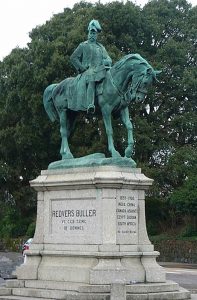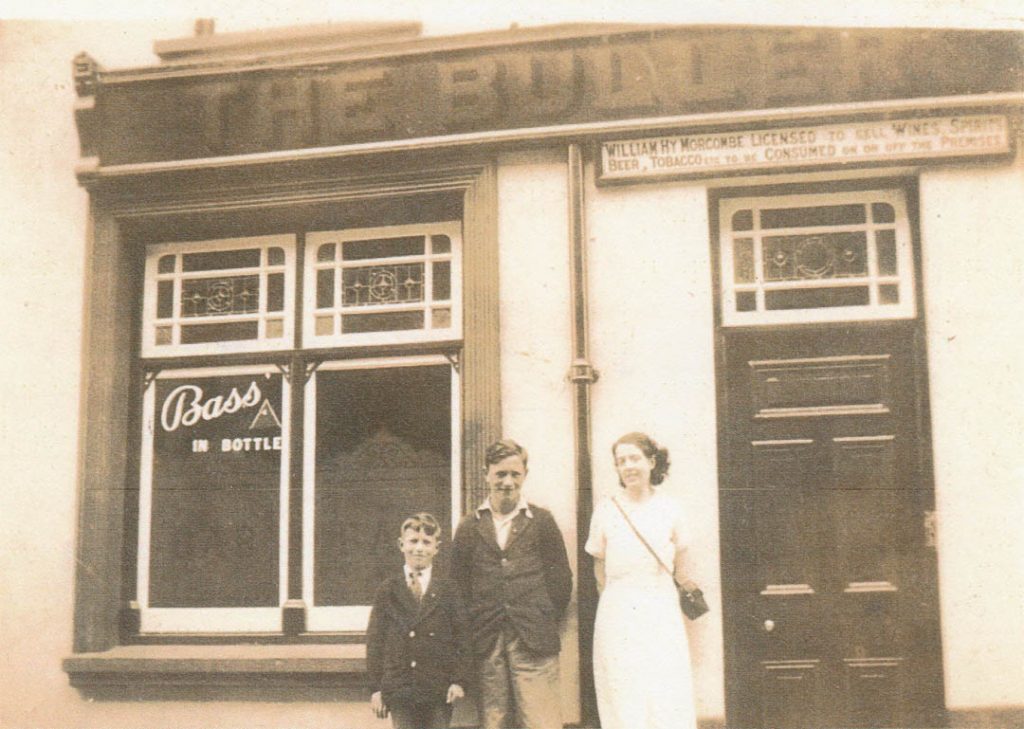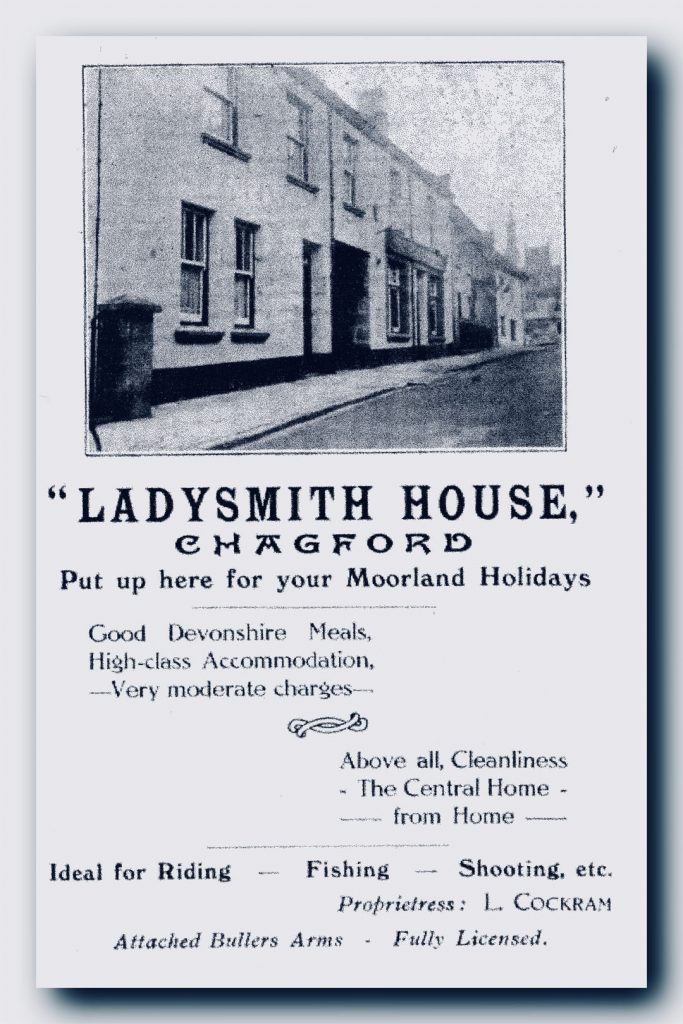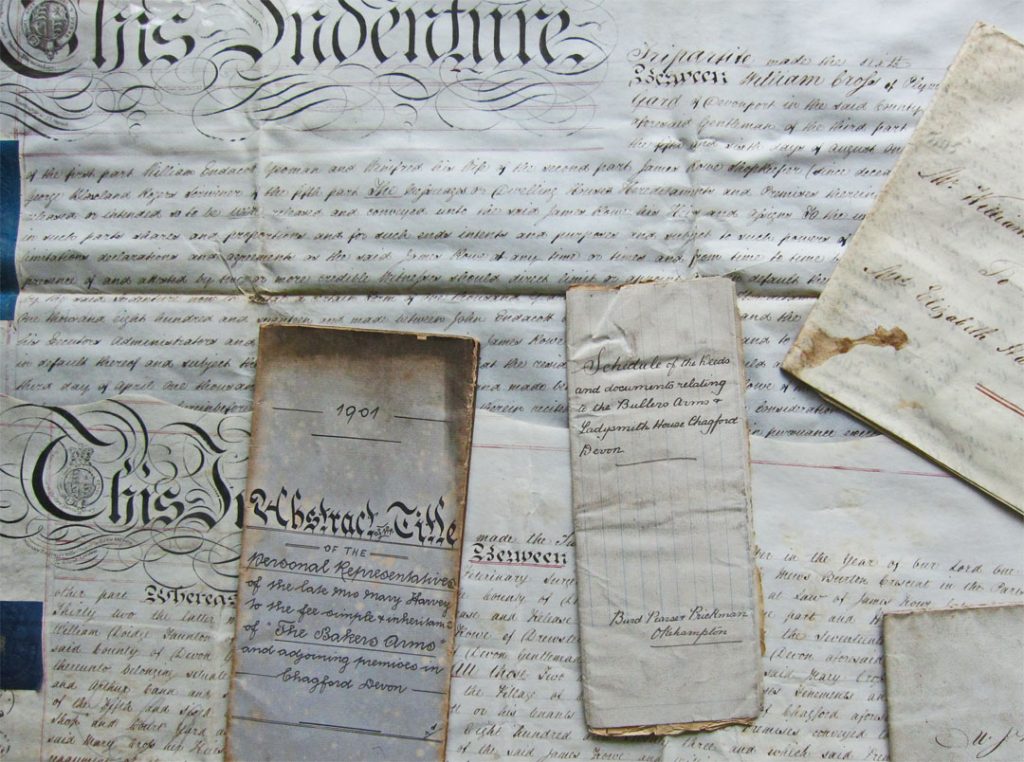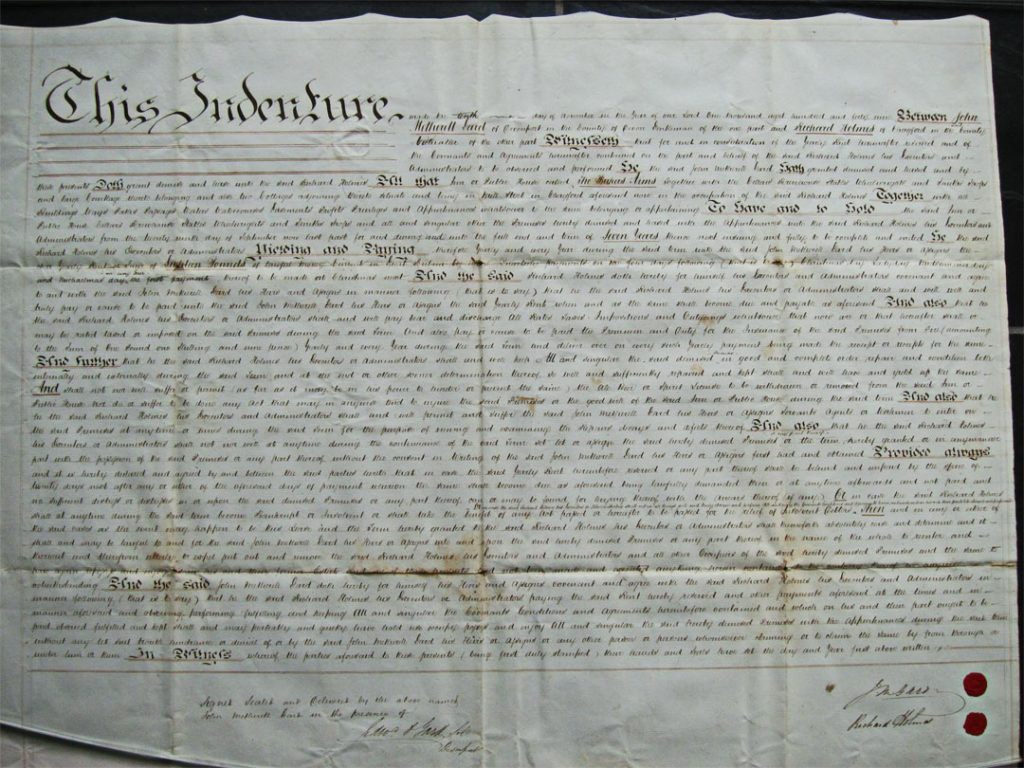From Bakers to Bullers: the Chagford Inn in the 19th and early 20th Centuries
The Chagford Inn has been a pub for 200 years or more. During that time it has had three different names: the Bakers’ Arms, Buller’s Arms and, since 2014, the Chagford Inn.
How old is the inn?
If you stand directly opposite the entrance to the Chagford Inn and look up to the level of the first floor you’ll notice a small carved stone plaque set into the render of the wall. It reads “JR 1823”. This could be the date when the property was built or possibly remodelled on an earlier structure – houses certainly lined Mill Street before this date. JR could well be James Rowe, who is recorded as the owner of the building (along with other property in Chagford) in the Tithe Apportionment listings 1843. Here the tenant, who would almost certainly be the innkeeper, is listed as Richard Holmes. Indeed Richard Holmes is mentioned as the lease of the property in a number of property deeds relating to the Bakers’ Arms during the 1840s and 1850s.
The known history of the inn suggests that there has always been a publican and family living here and running the business, while paying rent to the owners of the premises. It appears that many of the 19th century publicans worked in other occupations, presumably to supplement the family income. So in the 1851 Census Richard Holmes appears, aged 44, with his occupations listed as “wheelwright” and “innkeeper, employing three men”. He lived here with his wife Mary (aged 37) and five children, all boys. Under the same roof are listed an unmarried “general servant”, Sarah Stoneman, aged 21, and a “wheelwright journeyman”, John Ward, aged 24 and also unmarried. Richard Holmes’ trade as a wheel wright is corroborated by a document that he signed on 10th November 1849 for the lease “of the Inn or public house called The Bakers Arms together with cellar Brewhouse stables wheelwrights and smiths shops and large courtledge thereto belonging and also cottages adjoining”.
Many occupations
Richard Holmes’ work as a wheel wright is corroborated by a document that he signed on 10th November 1849 for the lease “of the Inn or public house called the Bakers Arms together with cellar brewhouse stables wheelwrights and smiths shops and large courtledge thereto belonging and also cottages adjoining”. This is a clear indication that the Bakers’ Arms wasn’t simply a pub, but an inn catering for travellers with horses and carts and indeed the whole range of trades associated with hospitality and transport.
The inn was also a lodging house and the early census returns, when listing occupations of these lodgers, give a snapshot of the kinds of employment current at the time. So we have, from 1861, listed as “boarders” Richard Oldridge, a “marine store dealer”, with his wife Catherine, and Mary Parnell, both listed as “hawkers”. The 1871 census lists two other boarders: a widowed agricultural labourer, George Underhill, and a “molecatcher”, John Clampitt, unmarried at 51 years old. Census returns don’t say whether these boarders were longterm residents or temporary visitors, passing through on business. The nature of these listed occupations might suggest the latter.
This extract from the lease of 1849 shows the Bakers Arms was not just an inn but the centre of a number of trades comprising a brewhouse, stables and a workshop for smiths and wheelwrights. Something of this versatility probably continued though the 19th century.
This remarkable early photograph, shows the hill of Mill Street leading up to the Square, with Church tower behind. It must date from before 1867 because that is when the Methodist Chapel (now converted to the offices of Helpful Holidays) was built next door but one down the hill. The frontage of the pub is very different than it is today and indeed different to the way it looked in the 1930s, judging by the photos of the exterior we have from this that time. It all points to a major remodelling of the building, probably in the last year of the 19th century. The pub sign is prominent, with the “Bakers Arms” just visible. The house next door, up the hill to the right, was known Southmead in the later 19th century and was occupied at the time of the 1891 Census by the Lyddon family, who also occupied and ran the Bakers Arms. Little wonder the family needed two houses, as William Lyddon (listed as a “licensed victualler”) and his wife Emily had seven children at the time, aged between 17 down to 6 years old! The railings you can see in the photograph in front of the house still exist, although the house has been renamed at “Moorcroft”. The cottages immediately to the left of the pub no longer exist, being replaced in the later 19th century by a house that still stands, long known as “Ladysmith House”
Mischief and mayhem in old Mill Street
There are several reports in the local newspapers in the later 19th century of incidents connected to drunkenness and disorder in Chagford’s pubs. George Dodd and James Leaman, young labourers from Chagford, were involved in what the Western Times that called a “drunken spree” on the night of 5th March 1868, having left the Baker’s Arms at midnight. Dodd and Leaman, met up with Murchington resident Samuel Leaman, apparently a fellow drinker at the pub (and probably a relation), in the street. Samuel accused Dodd and James Leaman of taking money from his purse while they walked together in the street. As Samuel’s story was confused and rambling the accused were acquitted.
But young Dodd was in more serious trouble a few years later when he was convicted of assaulting a police officer. The Western Times of Thursday 19th October 1871 tells the story the assault on Constable William Woolcock by “George Dodd, 26, labourer”, who was evidently misbehaving himself in the Baker’s Arms on the evening of 8th October. The constable was called to “turn the prisoner out” of the pub. After some difficulty the constable managed to get Dodd out of the door and walked behind him towards his house, whereupon “the prisoner turned round, struck him a violent blow in the back of the head and kicked him savagely several times”. Several witnesses corroborated the policeman’s statement and Dodd was found guilty and, “as he had been previously convicted of brutal assault” he was sentenced to twelve month’s hard labour.
In the 19th century the pubs of Chagford were not only places of cheer, sociability and, in some cases disorder, but also business, where deals were negotiated face to face. For local farmers the hospitality and facilities provided by the inns were ideal places to do business. Sometimes business took on a more nefarious character, as is reported in the Exeter Flying Post of a case at Moretonhampstead Petty Sessions on 30th November 1881: John Endecott, a farmer of Metherill [a property between Chagford and Fernworthy], was charged with stealing from John Tozer, 4 pigs, valued at £5. On the 12th Tozer took 8 pigs to Chagford for sale. He placed them in a pig’s house in the Ring O’Bells Inn yard, and went to the Bakers’ Arms Inn. Endecott came there and offered £5 for the 4 pigs which he would take away in 2 hours. 20 minutes later Tozer went to the Ring O’ Bells with Mr Northway to sell the remaining 4 pigs, to find Endecott had already removed the first 4 without paying.
Bakers to Bullers
It appears that major building alterations to the pub and the building (probably the boarding house) next door were undertaken in 1899. By the 1901 Census the Bakers’ Arms was renamed the Bullers’ Arms to commemorate the celebrated general, Redvers Buller, hero of the Second Boer War, which was still being fought at this time. Buller lead the army that relieved the protracted siege of Ladysmith in February 1900 and the Buller family were also major landowners in the Exeter and Crediton area. It must have been at the same time that the replacement to the house next door on the left looking at the pub was named “Ladysmith House”. A deed of conveyance transferring ownership of the premises dated 24th June 1901 refers to a “public house and stables formerly known as the Bakers Arms and now known as the Bullers Arms” and then mentions as part of the same deal “premises (formerly two cottages) adjoining the last mentioned premises [i.e. the Bullers Arms] known as Ladysmith House”. According to the 1901 Census, Ladysmith House is occupied by the Lyddon family, who are also listed as occupying the Bakers Arms and Southmead. It must have become quite a big concern, catering no doubt for the growing number of tourists who visited Chagford at this time. William Lyddon is now listed as a “hotel/pub keeper” and Emily, his wife, as a “lodging house keeper”. Now a private dwelling, Ladysmith House continued to be a boarding house well into the 20th century.
Outside the Bullers’ Arms, probably 1936, showing Mrs Cockram, the daughter of the recently installed publican with her two brothers Bill (12) and Edgar (8), before the licensee sign above the door was changed from William Morecombe who gave up the pub in 1936. The Cockrams were licensees from 1936-9.
A further example of the versatility of both the publican families and the premises they worked in can be seen from the tenure of Ern and Florrie Courtney who were the licensees from 1947 – 1974 and also took in lodgers at Ladysmith House next door. Ern was later helped by his son Ron and Barbara Courtney. Ron ran a haulage business. A Chagford resident, who was born here, remembers that the yard was used for several things, including tethering horses of anyone who rode into Chagford and for the tin baths for the Chagford football team after matches, although it seems unlikely that the football team actually had their bath in the yard. Ron ran the club for many years and even organised matches with our French twin town, Bretteville-sur-Laize.
Over the past 100 years there have been over a dozen different licensees running the Bullers’ Arms until it closed for over a year in 2013, during which time it was extensively restored and remodelled to make the attractive pub you are enjoying today, with rooms and an excellent menu.
Some of the deeds relating to the ownership, lease, sub-letting inheritance and mortgaging of the Bakers’ Arms in the 19th Century. The inn and its adjoining premises was a valuable financial asset and legalities around its changing ownership and tenancies were complex. These documents are now the stored in the Archive at the Chagford heritage Centre and were kindly donated to the Chagford Local History Society that operates the Archive.
This document records the renewing of a seven year lease on the Bakers arms and associated premises on 10th November 1849 between John Metherall “of Devonport… gentleman” and Richard Holmes, “shopkeeper” of Chagford who was the publican for several years. It shows how many valuable properties in Chagford could be owned by people who lived far away and whose status as gentlemen depended on the rents from property. The rent is set at an annual £18.
